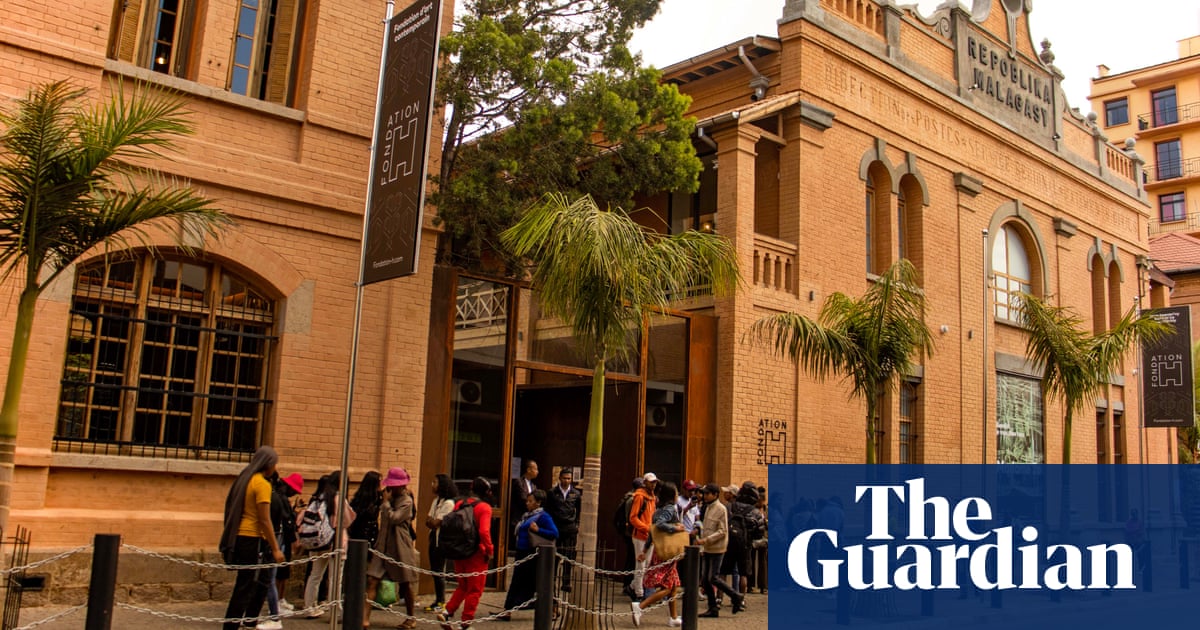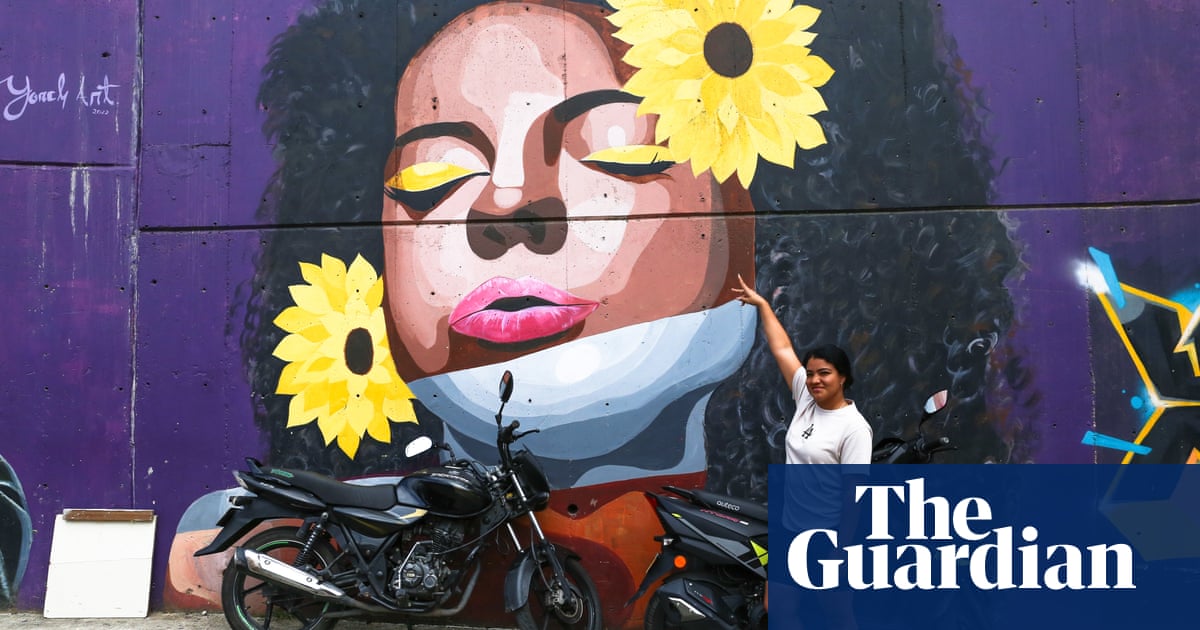
In a country ravaged by food and health emergencies, art is vital, says Hobisoa Raininoro. “It is important to bring a note of hope, to show beauty, creativity, and provide nourishment for the mind and imagination,” says the co-curator of the inaugural exhibition at Madagascar’s first major contemporary art venue, Fondation H.
Until last year, Madagascar had a vibrant art scene but no public museum of modern art or art school. Then, in April – after two years of restoration – a former post office in the capital, Antananarivo, opened its doors as Fondation H’s new gallery.
Its first exhibition, Bientôt je vous tisse tous – “soon I will weave you all” – runs until the end of February, and has been dedicated to Zoarinivo Razakaratrimo, a doyenne of Malagasy art. Known as Madame Zo, her work has been exhibited across the world and acquired by the Smithsonian’s National Museum of African Art in Washington.
The Fondation H exhibition is the first time the textile artist, who died in 2020, has been showcased at such scale in her homeland.
Madame Zo was famous for her use of weaving, an ancestral tradition that continues to flourish. Her work drew inspiration from lamba, a wrap made of silk or cotton worn by both sexes in Madagascar and used by mothers to tie newborns to their back and as a burial shroud.
Visitors to Fondation H are greeted by vast woven works hanging from tall ceilings, filling all five rooms over two floors of the large exhibition space.
“Madame Zo developed an extremely complex technique, freeing herself from the limitations of material or format,” says Raininoro.
“She had her own artistic language – her weavings have unusual shapes and sizes thanks to looms that she made herself.
“They integrate several hundred materials such as newsprint, magnetic tapes, electronic components, copper, bones, medicinal plants, industrial foam, rubber, wood chips or perishable foods.”
Fondation H was started in 2017 by Hassanein Hiridjee, a French-Malagasy entrepreneur and chief executive of the pan-African Axian conglomerate. The foundation initially occupied a much smaller space before the new building opened in April 2023.
“We invite hundreds of kids from public schools every week at Fondation H. These kids have very few chances and opportunities in their life,” Hiridjee says, adding that the programme encourages the children “to speak their own voice and create”.
“With a very closed educational system, access to art is a way to open up to the world and possibilities,” Raininoro says.
One of the world’s largest islands, Madagascar has one of the highest global poverty rates. About 1.6 million people are estimated to be food insecure and need humanitarian assistance. Three-quarters of the population live below the poverty line.
Richianny Ratovo, a young Malagasy artist who won Fondation H’s annual art prize, the Prix Paritana, in 2021, says Fondation H has “played a decisive role” in her career.
Winning the Paritana prize gave her a three-month residency at the Cité Internationale des Arts, a complex in Paris that hosts artists, choreographers, musicians, writers and designers. She has since held a solo exhibition in the French capital and later in Madagascar.
“This opportunity enabled me to become a full-time artist,” she says. “Fondation H has profoundly impacted the artistic scene in Madagascar by filling the creative void resulting from the absence of art schools and institutions promoting art.”
The foundation has exhibited the works of at least 50 artists since its inception and sponsored the first Malagasy pavilion at the Venice Biennale in 2019. It is part of a growing art scene in Antananarivo, with a number of smaller art venues and galleriesarriving, including Hakanto Contemporary, a non-profit space for artists; as well as the Is’art Galerie and Flow Gallery.
“The Malagasy art scene is evolving into a promising dynamic,” says Ratovo. “Emerging trends reflect cultural richness, making the scene particularly captivating.”
Temandrota, another Malagasy artist, says practising art in Madagascar “requires bravery”, and “the main challenge is believing in art [when] society doesn’t”.
Madame Zo’s art is about these changing – and challenging – times, he adds. “We’ve seen the arrival of secondhand clothes from abroad – a mark of globalisation – which contrast with the ancient practice of weaving.
“As the artist is never far from his or her society, Madame Zo is a reflection of the changing world – of globalisation in her weaving.”












